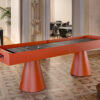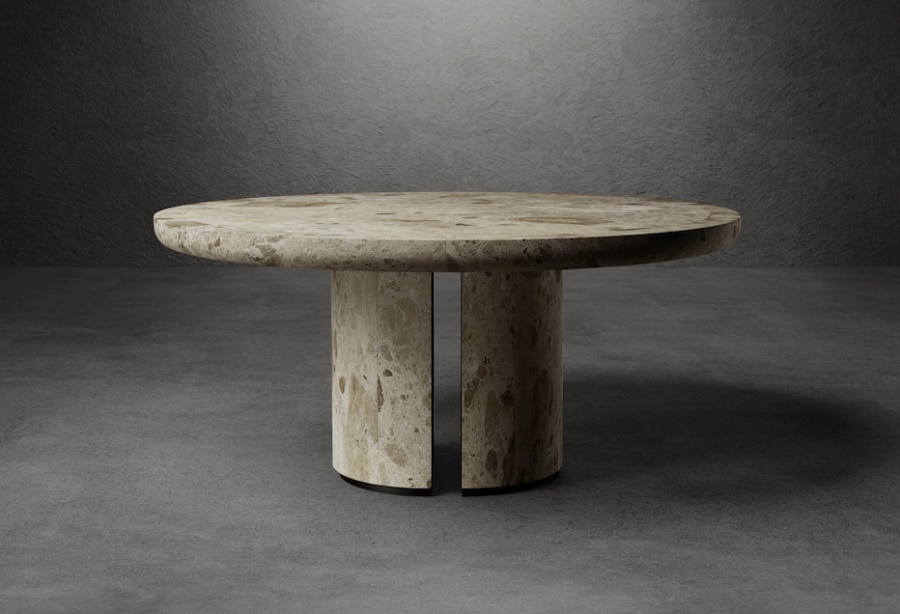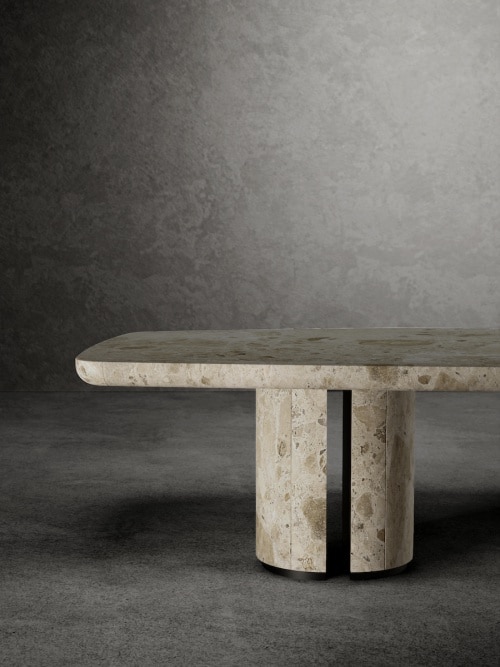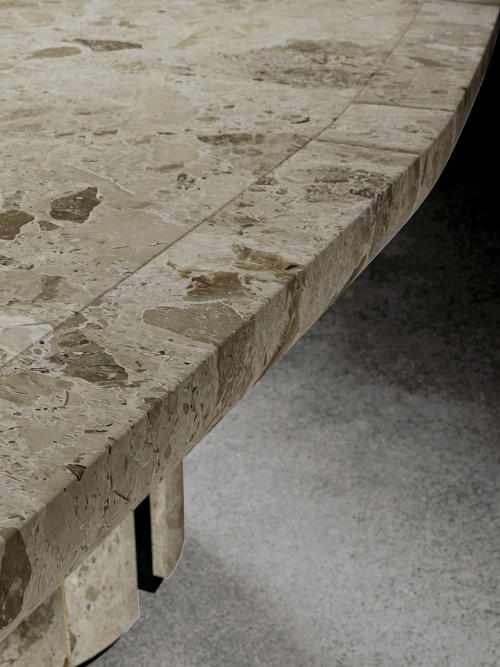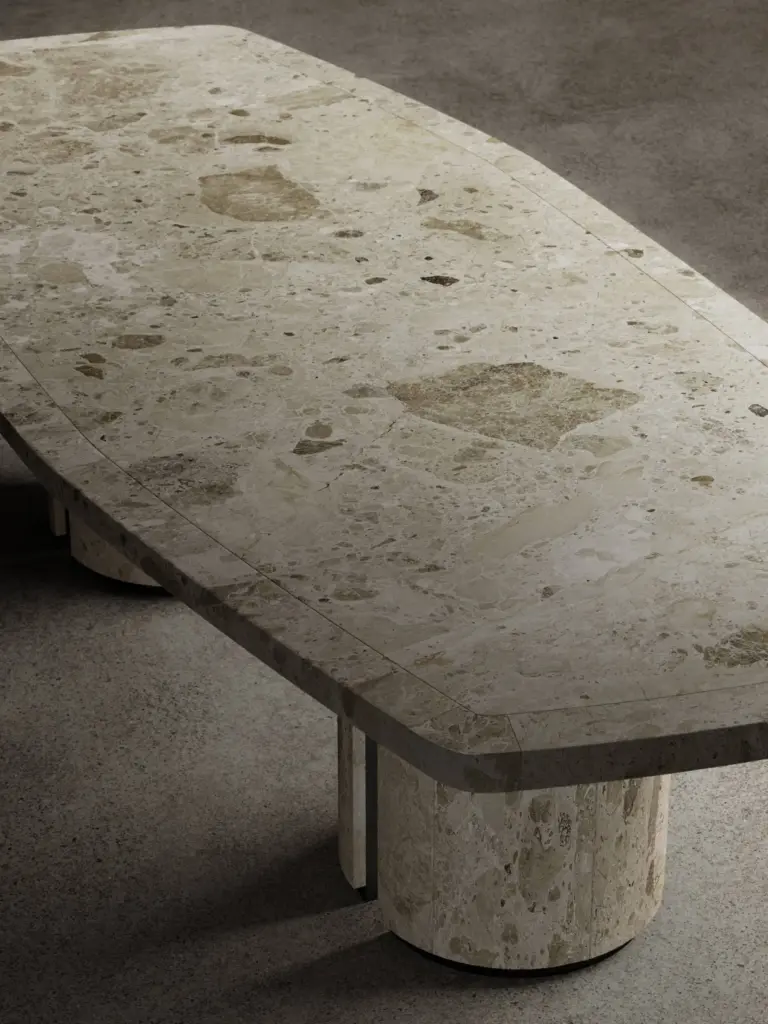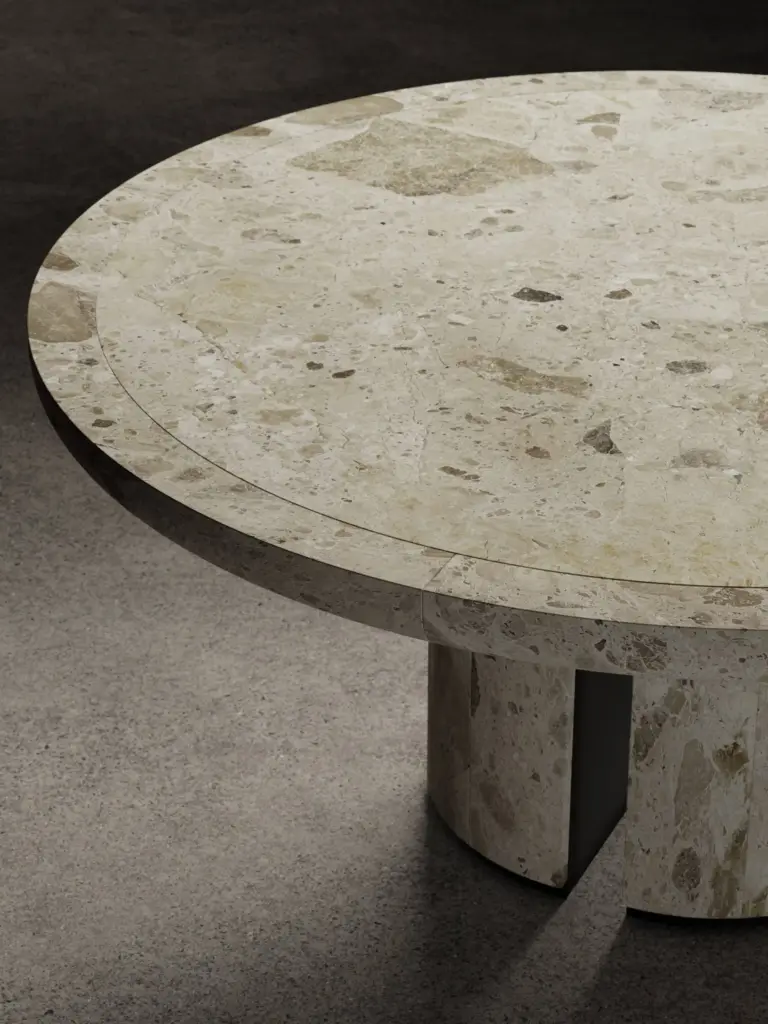A sculptural object that simultaneously embodies an idea of grace and strength, the For No One table, a harmonious synthesis between form and material, was selected by Galerie GARDE for the New York fair dedicated to the world of collectors and art design enthusiasts.
The Salon Art + Design exhibition took place in a setting that evoked the atmosphere and elegance of a bygone New York. The twelfth edition returned to the Park Avenue Armory in Manhattan from 9 to 13 November 2023. On this occasion, the American boutique design company GARDE based in Los Angeles, Dallas and New York, presented the “For No One” table. This was designed by Gio Pagani the architect and designer who founded the eponymous brand in 2015 by opening a gallery in the heart of Milan. This marked the first step in the collaboration between the Italian designer and GARDE, whose team included names of excellence in the international creative scene.
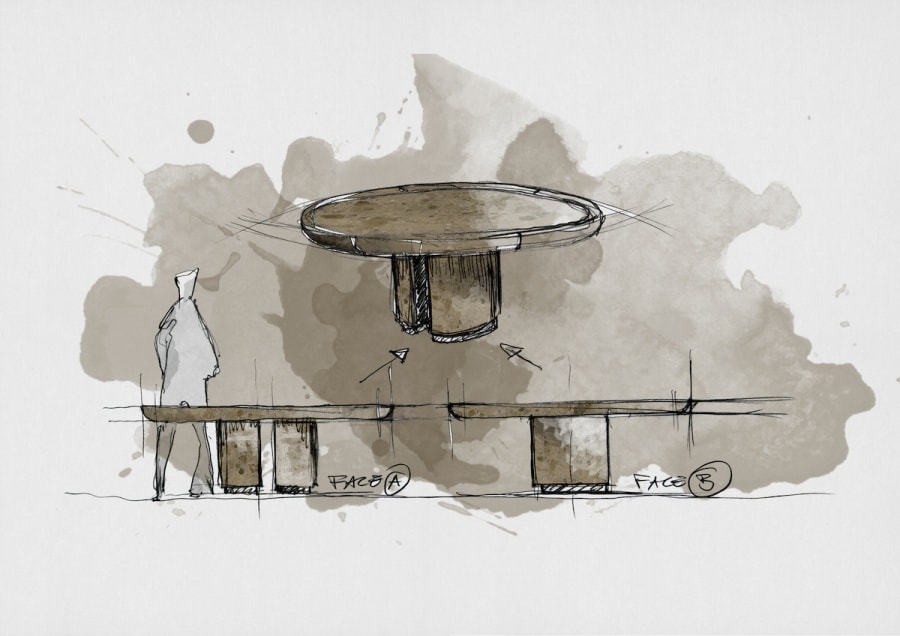
Through his creations, Gio Pagani becomes the spokesperson of an eclectic design, full of evocations and memories, where the narrative is noble materials and craftsmanship interpreted in the light of a sensibility rooted in the aesthetic and manufacturing culture of the first half of the 20th century.
“I don’t believe in ostentatious design, I think that beauty is a question of proportion, harmony, sinusity and respect for memories – at the same time I love to dress these forms with this strong eclecticism that we know how to go beyond the usual creative imagination, almost to seek a discordant experiment”.
Pagani says
For No One: the grace of the design and the strength of the material
Balanced integration between form and matter, between sensations in the memory and new tactile and visual perceptions that reveal the grace, the minimalist and brutalist design of the For No One table comes from the choice of a raw and organic material such as natural stone, ambrosia marble, which the designer transforms into a sculptural object. The solidity of the stone, reinforced by the firm thickness of the top, is combined with the robust structure of the legs – semi-circular monoliths that gently soften the features – which are combined with the graphic touch of a hoof in matt black metal.
Conceived, designed and built entirely in Italy, For No One – available in round and large versions – transmits the monumentality and primitive strength of a millenary and resistant material, shaped for centuries by geological processes that today undergo processes that act intrinsically on its structure. The textures and nuances, enhanced by complex artisanal techniques that excavate the stone, bring it back to its truthfulness, perfectly intertwined with the use of cutting-edge technologies, returning the idea that each block carries the weight of countless eras, silent witnesses of a unique history, in continuous evolution.
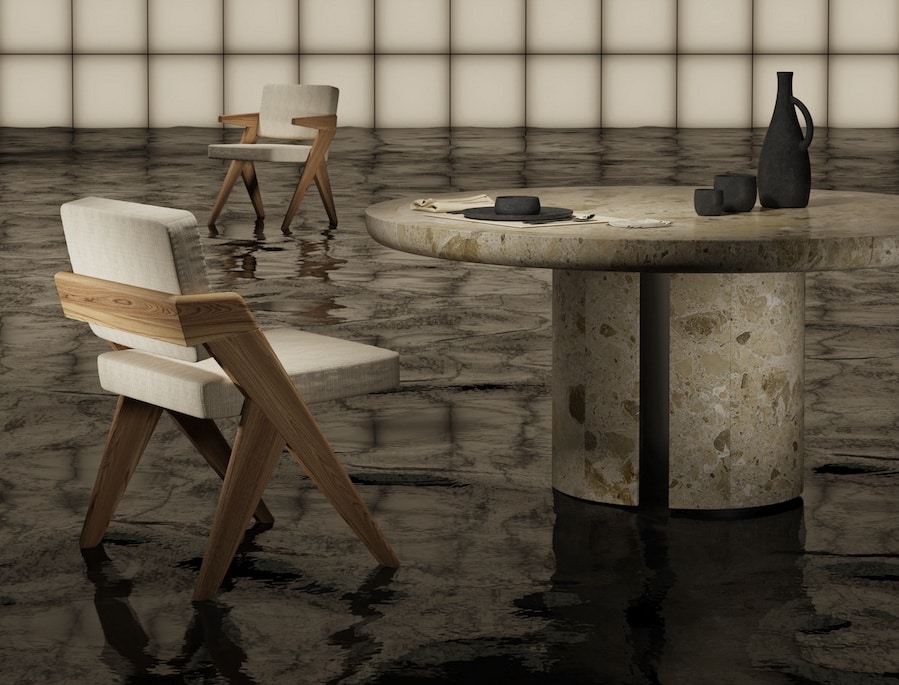
If for Gio Pagani the beauty of a material lies precisely in its history, for the For No Table the choice of material also embodies a tribute to the tradition of the masters. The Ambrosia marble grain from which it is made has a warm and earthy chromatic texture between chestnut, grey and cream, whose origins refer to the Ceppo di Grao, a stone that contributed to the greatness of Milan between the two wars, beloved by designers such as Piero Portaluppi. Added to this are the work, mastery and sensitivity of Italian craftsmen, able to recognise the traces and the way history and time change the surfaces of the stones, woods, buildings and architectural environment that pollute the city, which become an added value for GIOPAGANI to create products that know how to confuse time.
Production Sanford L. Smith + Associates, Salon Art + Design is an exclusive event that hosts 50 prestigious galleries from all over the world specialising in contemporary, modern and historical interiors, as in Art Deco and in the art of the 900, which owes its success to the high quality of the proposals, the mix of styles, genres and historical periods. In this context, GIOPAGANI becomes the bearer of a purely sartorial gesture, accompanied by the desire to convey an idea of lifestyle through furniture, where aesthetics does not want to be a starting point or a destination, but a fixed point in time. Moulding matter and living forms that can become objects that can be handed over.




